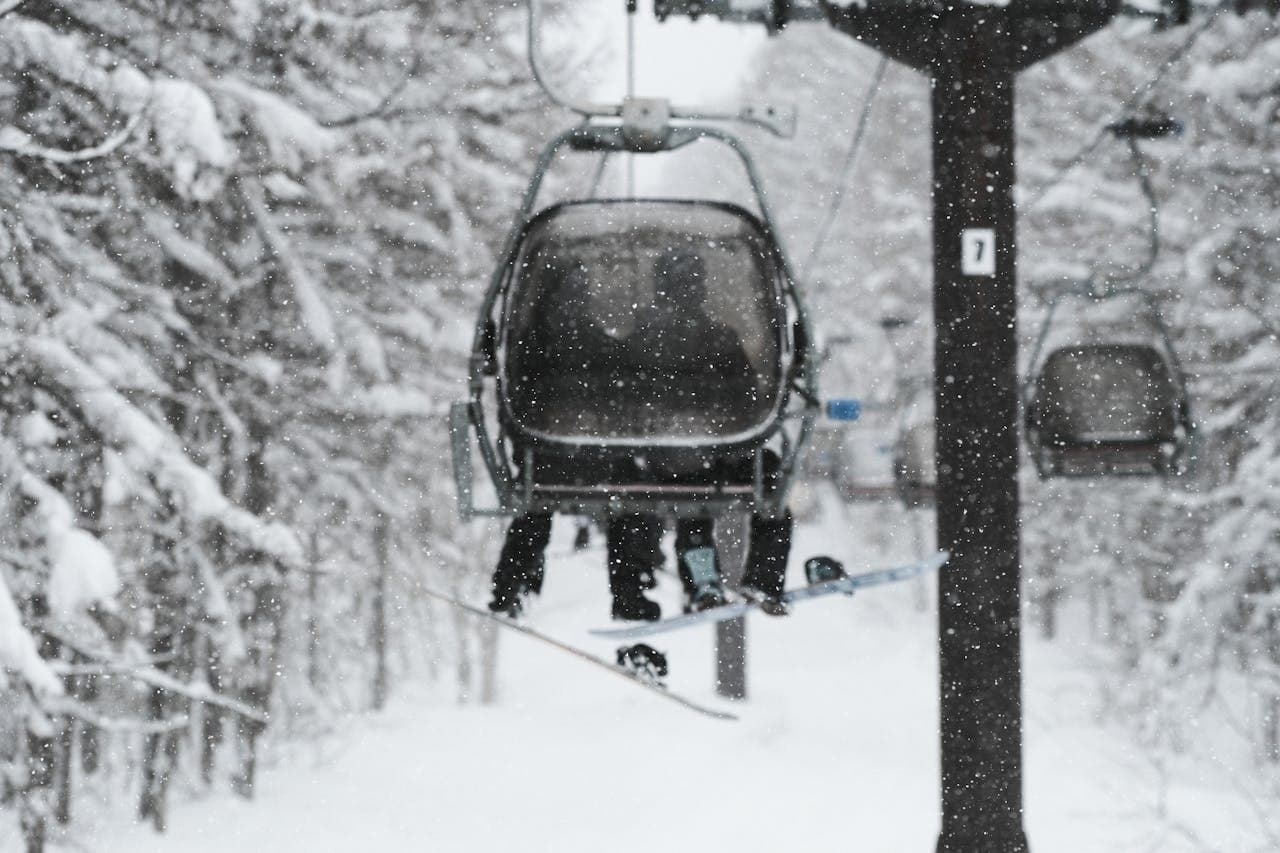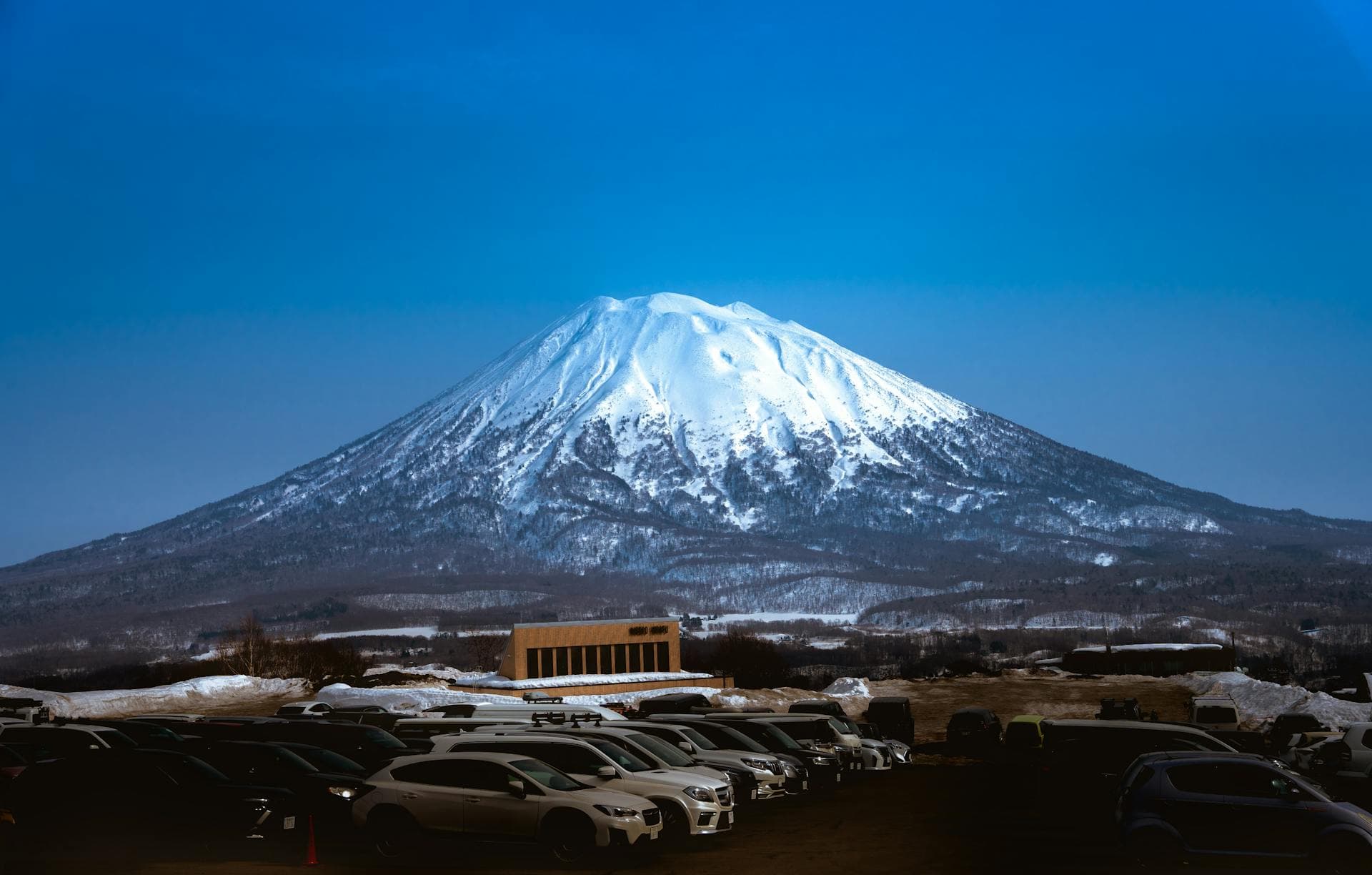Niseko Ski Resorts
The town of Niseko sits nestled at the foot of Mt. Annupuri,where you can gaze upon the 4 major ski resorts that give the town its legendary reputation. Grand Hirafu, Hanazono, Niseko Village, and Annupuri all wrap a single volcanic cone that catches storms rolling off the Sea of Japan. You ride one mountain but experience four personalities. Hirafu is the lively hub with long groomers and side-hit trees. Hanazono brings playful terrain, terrain parks, and easy access sidecountry. Niseko Village has steeper fall-line shots tucked beneath polished hotels. Annupuri, quieter and more local, offers mellow bowls and the most relaxed vibe. A unified lift pass and shuttles stitch it all together so your day can flow with the weather. You can storm laps in the trees in the morning, a sunny traverse to Annupuri bowls after lunch, and an easy glide back to Hirafu for a dip in the hotsprings called Onsens and eat Japanese noodles.
The foothill towns mirror that variety. Hirafu feels like a compact, vertical village with lantern-lit lanes, stacked condos, izakayas hidden down icy stairs, Australians enjoying their beers, and boutique cafés pouring espresso next to soup-curry joints. Kutchan, a few minutes down the road, is the working heart. It has supermarkets, ramen counters, hardware stores, and a late-night yakitori place where lifties and guides thaw out. Niseko Village is a resort with polished and wider streets, hotel lobbies, ski-in pastry, and a short stroll to lifts while nearby Moiwa and Konbu offer a hush that feels decades older. Moiwa includes pensions with creaky corridors, steaming outdoor baths under muffled snow, and the kind of quiet that makes first tracks feel inevitable.
For visitors, Niseko is famously foreigner-friendly. English menus, rental shops with modern gear, group lessons in multiple languages, and cashless lift gates make the first day easy. It’s also where Japan’s mountain development is most visible. The sleek condo towers, design-forward hotels, new gondolas, and a wave of restaurants ranging from Michelin-noticed kaiseki to smash-burger pop-ups all have developed in the recent decades. Some love the convenience—espresso at 7, blower pow at 8, wagyu at night. Others come for quieter corners and ride the shuttle out of the bustle. Either way, the infrastructure means fewer things to worry about. Airport transfers from New Chitose, frequent resort buses, and a density of services that makes travel feel less stressful.

What doesn’t change is the snow’s rhythm. Cold Siberian air crosses the Sea of Japan, loads up, and empties out over Hokkaidō all throughout winter. It’s why locals watch streetlights at midnight where halos mean dendrites are stacking and tomorrow will be bottomless. Tree skiing is king on storm days. The famous Japow covers the mountains and you can enjoy the lightest powder in the world. On clear days the upper gates open to bowls and ridgelines with mountain views of Mt. Yōtei.
Evenings are simple and perfect: boots off at the door, steam rising from an outdoor bath while flakes melt on your shoulders, then a walk through packed snow to dinner, Foods like hokke, zangi, butter-corn miso ramen, or a counter seat for sashimi and hot sake. The night ski scene is its own ritual. Floodlit powder under a quiet sky, silhouettes moving like lantern shadows. Niseko offers a tase of Japanese ski culture in its rawest form, where modern ski resort luxuries meets traditional Japanese culture. You can experience a whole new vibe that can only be experienced in the towns of Hokkaido, all while enjoying the powder that has made this town famous on the world stage.
